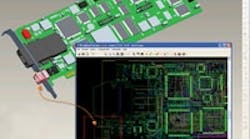Once upon a time a farm tractor was simply a farm tractor. Today it may not be so simple. Today's tractors can include global positioning systems and offer hands-free operation. Other additions may include touch screens and built-in memory. The point is, today's tractor is a complicated integration of mechanical, electrical and software components, challenging its designers to collaborate like never before.
Indeed, mechatronic products -- products that blend mechanical, electrical and software technologies -- have exploded far beyond such industries as high-tech, aerospace and consumer product goods. That means more and more product development teams that once may have been comprised of mechanical engineers and electrical engineers are now adding software to the mix.
"If companies are adding engineers, they're more often than not adding them on the software side of the house," says Chad Hawkinson, vice president of vertical market strategy at solution provider PTC.
Additional challenges of mechatronic product development noted by PTC include MCAD changes not reaching electrical engineers quickly enough, ECAD designers working ahead of the mechanical engineer and failing to relay that information, and software development largely removed from the product development change management process. Among the consequences of these disconnects is a failure to identify system-level problems early in the product development process.
Resolving such challenges remains a challenge itself. Among the suggestions put forth by the Aberdeen report are:
- Implement processes such as regular cross-functional design reviews to overcome the lack of cross-functional knowledge.
- Use simulation to identify system-level problems early in the design process.
- Manage requirements throughout the lifecycle of the design from the initial capture of the requirements to the final testing phase.
- Continue to leverage PLM and system engineering tools.
See Also




